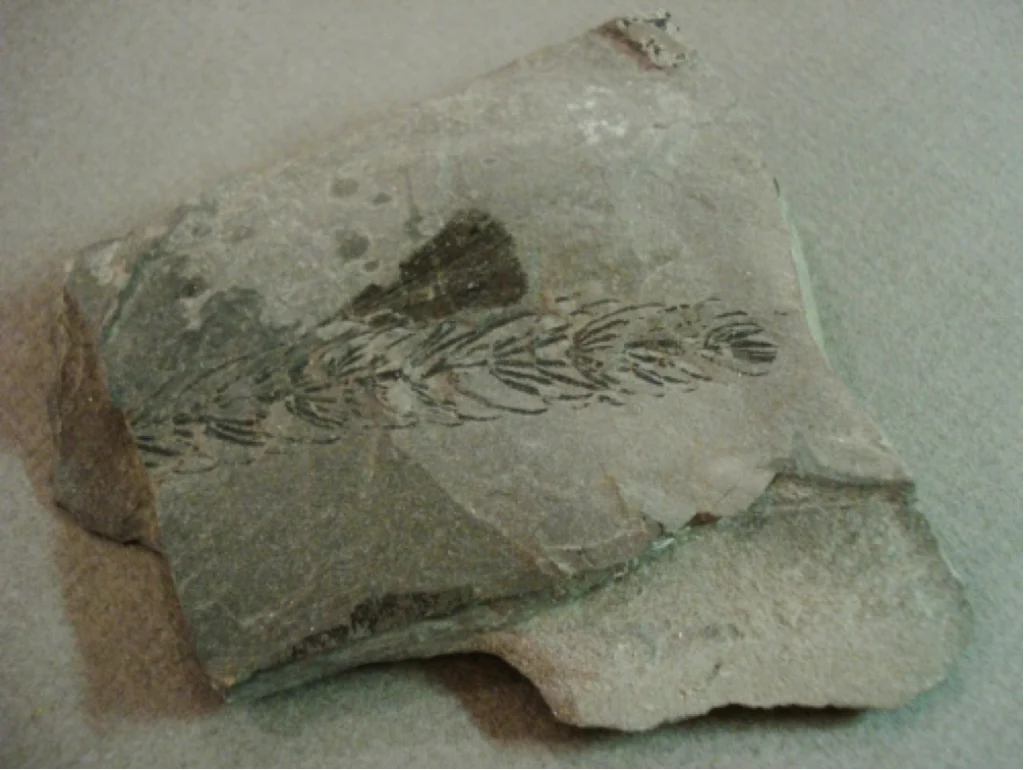In a previous blog post, we discussed the concept of ‘native species.’ While there is no universally accepted definition, we can generally think of a native species as one that has been present in an area since the last ice age.
But how do scientists even know which species came from where?
To answer that, scientists rely on clues and evidence from the past to trace the origins of different species. Here are some of the key methods they use:
1. Fossil Records
One way scientists trace the origin of a species is by examining fossil records. Fossils provide direct evidence that a species existed in a particular area in the past. If fossils of a species are found in a specific region, it suggests that the species has been there for thousands of years and likely wasn’t introduced from elsewhere.

Horsetail (gwhetham, iNaturalist)
For example, the ancestors of the modern horsetail plant, known as calamites, left fossils dating back to the Carboniferous period over 300 million years ago. These fossils have been found across Canada and North America, which supports the idea that the horsetail species is native to our area.

A fossil of calamites leaves, found in Nova Scotia (Photo credit: University of Waterloo)
2. Historical Records and Herbarium Collections
Another way to track a species’ origin is by reviewing historical records. Early accounts and collections, such as herbariums (gatherings of preserved plant specimens), can provide insights into when and where certain species first appeared. However, these historical documents are not always accurate or complete.
A great example of this is the introduction of Scotch broom. In an article from The Victoria Colonist, it notes:
“In October, 1850, the British Consul gave [Captain Grant] some broom seeds which, on his return, he planted in front of his home. Later, when the Muirs bought the place, it was found that just three of the seeds had sprouted. The men of the family wanted to uproot the tiny bushes, but Mrs. Muir protests, wishing to retain the broom for sentient’s sake to remind her of Scotland.” (Historic Grant Farm Scene of Celebration, Daily Colonist, 12 July 1931)

Scotch broom flowering in BC
3. Molecular Evidence
Molecular biology provides another powerful tool for determining a species’ origin. By analyzing DNA, scientists can uncover genetic evidence that helps trace a species’ history.
A fascinating example is the story of the common periwinkle (Littorina littorea), a species of sea snail. For over 100 years, its origin has been debated. Was it native to North America, or was it introduced? In 2008, a team of scientists used molecular genetics to settle the debate. They compared the DNA of the periwinkle and its most common parasite from both North America and Europe.
Their findings revealed that the European periwinkles were genetically diverse, while the North American population had much lower genetic diversity. Additionally, the North American periwinkles had fewer parasite species, a common characteristic of recently introduced species. This evidence strongly suggested that Littorina littorea was not native to North America, but rather introduced from Europe.
To read more about this fascinating study, you can check out the full article on the Smithsonian Environmental Research Centre website.
4. Indigenous Knowledge
In many cases, Indigenous knowledge offers valuable insight into the historical presence of certain species. This approach is typically paired with fossil records and DNA, as some non-native plants have also made their way into Indigenous culture.
For example, the Western red cedar has been used by Indigenous peoples in the Pacific Northwest for many traditional purposes, including building canoes and making baskets. This long-standing relationship between the species and the Indigenous communities suggests that the Western red cedar has been present in the area for as long as these communities have lived there.

Western red cedar (Photo credit: Wikimedia Commons author Ecoscapes)
What if We Don’t Know the Origin of a Species?
Unfortunately, not all species have a clear origin story. Some species, known as cryptogenic species, don’t have enough historical records, fossil evidence, or DNA data to determine whether they are native or introduced. The geographic history of these species remains a mystery.
Additionally, scientists sometimes revise their understanding of a species’ origin as new evidence comes to light. Check out this fascinating story about the Northern pool frog, which was once believed to have been introduced to the UK. Recent research suggests that it may, in fact, be native to the region.
The Future of Species Research
As scientific techniques continue to evolve, we gain access to more sophisticated tools for uncovering the origins of species. With advances in genetic analysis, fossil discovery, and other methods, scientists can build a more complete picture of how species have spread across the globe.
The more we learn about the history of different species, the better we can protect them—and our ecosystems—for future generations.


Add Comment